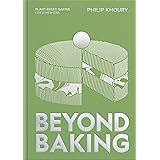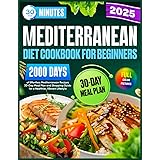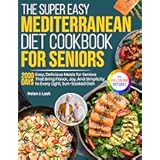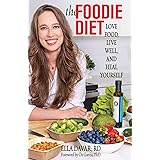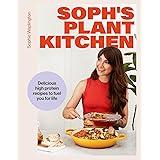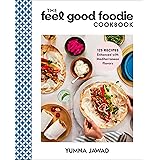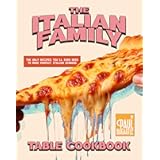Achieving weight loss objectives through nutrition is significantly simplified when efficient meal preparation strategies are adopted. As thoughtfully discussed in the accompanying video, the essence of successful fat loss and sustained healthy living lies not in restrictive fad diets, but in establishing consistent, uncomplicated eating routines that can be easily followed. This article delves deeper into practical, healthy meal prep ideas, building upon the foundational advice provided, ensuring that consistency becomes an achievable goal rather than a fleeting aspiration.
The Foundational Pillars of Healthy Meal Prep for Weight Loss
Before any food preparation commences, two crucial elements must be considered for supporting metabolism and energy levels throughout the day. These steps are often overlooked but are integral to optimizing the body for effective fat loss.
Prioritizing Hydration for Optimal Metabolism
Upon waking, the body is in a state of natural dehydration after several hours without fluid intake. Consequently, initiating the day with proper rehydration is paramount for metabolic function and energy production. It is recommended that a significant volume of high-quality water, approximately 20 to 32 ounces, be consumed within 30 minutes of rising. This water, ideally filtered and potentially enhanced with a pinch of pink Himalayan sea salt or other trace minerals, aids in cellular hydration, nutrient transport, and detoxification processes. Imagine if your body’s engine was running on low oil; similarly, insufficient hydration can impede metabolic efficiency, making weight loss more challenging.
Understanding Intermittent Fasting and Meal Timing
The concept of intermittent fasting has gained considerable traction, suggesting that skipping breakfast might be beneficial for some individuals. While this approach can be effective for certain lifestyles, the principles of healthy meal preparation remain relevant, regardless of when the first meal is consumed. Whether breakfast is enjoyed early in the morning or several hours later, the focus should remain on nutrient-dense, satisfying options that support satiety and stable blood sugar levels. A well-planned first meal, whenever it occurs, establishes a positive nutritional trajectory for the entire day.
Simplifying Your Morning: Breakfast Solutions for Healthy Weight Loss
Standardizing breakfast streamlines the start of the day and significantly contributes to overall dietary consistency. By selecting one or two go-to options, the mental load associated with food choices is reduced, fostering greater adherence to a weight loss plan. Here are several exemplary choices that are both nutritious and time-efficient.
Efficient Protein Shakes for Busy Mornings
For those with demanding schedules, a high-quality protein shake is an unparalleled breakfast option. The preparation time is minimal, often requiring only five minutes. A blender, approximately one to one and a half scoops of a protein powder (delivering 20-25 grams of protein), one to two tablespoons of chia seeds and hemp seeds, some almond or dairy milk, and a handful of wild frozen berries are all that is needed. Such a shake is not only packed with protein, fiber, and healthy fats but also provides essential nutrients like probiotics, vitamins, and minerals if a fortified protein powder is selected. The satiety offered by protein shakes is remarkable, preventing early morning hunger pangs, and their low digestive stress makes them ideal for quick consumption before daily responsibilities.
Nutrient-Dense Egg Preparations
Eggs represent another versatile and highly nutritious breakfast staple. They can be prepared in various forms, such as sunny-side up, scrambled, or poached, taking approximately five minutes to cook. Eggs are an excellent source of high-quality protein, healthy fats, and choline, a vital nutrient supporting brain health and metabolism. A typical serving of three eggs, perhaps accompanied by a small portion of sprouted microgreens and a slice of Ezekiel bread toast, constitutes a balanced meal. The richness of the yolk, often an indicator of high-quality eggs, signifies a greater concentration of beneficial vitamins and antioxidants.
Convenient Overnight Oatmeal for Plant-Based Diets
For individuals adhering to plant-based, vegan, or vegetarian dietary preferences, overnight oatmeal offers a superb alternative. Organic rolled oats, soaked overnight in a Mason jar with almond milk, hemp seeds, and chia seeds, transform into a rich, fiber-dense, and protein-packed breakfast. The addition of a scoop of peanut butter can further enhance the protein and healthy fat content, creating a delicious and incredibly convenient meal that requires no cooking in the morning. This method leverages passive preparation, allowing complex carbohydrates and nutrients to become easily digestible.
Leveraging Leftovers for Breakfast Efficiency
Furthermore, repurposing dinner leftovers for breakfast is an exceptionally effective strategy for minimizing prep time. Any balanced meal from the previous evening can be quickly reheated and consumed, ensuring consistent nutrient intake. This approach not only saves time but also reduces food waste, making it an environmentally and economically sound choice.
Streamlining Midday Meals: Quick and Easy Lunch Ideas
The midday meal often presents challenges for consistent healthy eating due to time constraints and the temptation of convenience foods. However, several straightforward options ensure that lunch remains a nourishing and satisfying experience, contributing to ongoing weight loss efforts.
The Versatility of Protein Salads
A protein-rich salad serves as an ideal foundation for a healthy lunch. Begin with a base of any preferred greens, such as spring mix or romaine, and top with a pre-cooked protein source. Options might include grass-fed ground beef, grilled chicken breast, baked salmon, or for plant-based diets, tempeh or legumes. Imagine if a batch of seasoned ground beef or chicken was prepared in advance; assembling such a salad would take less than five minutes. This approach is also incredibly adaptable when dining out; most establishments can provide a greens base with an added protein, making healthy choices accessible even on the go.
Wholesome and Convenient Sandwiches
Another excellent option is the construction of a high-quality sandwich using whole-grain bread, such as Ezekiel bread. Toasted Ezekiel bread, layered with sprouts, lean turkey slices, mustard, and perhaps a touch of avocado or pesto, forms a meal rich in fiber, protein, healthy fats, and numerous vitamins and minerals. Such a sandwich can typically be prepared in minutes and contains under 400 calories, offering substantial satiety. For those following a vegan or vegetarian diet, a hearty peanut butter sandwich on Ezekiel bread, possibly with added hemp seeds, provides a similar nutrient profile and convenience.
Embracing Leftovers for Lunch
Consistently, utilizing dinner leftovers is a highly recommended strategy for lunch. If the previous night’s dinner adhered to the “perfect plate” framework (discussed below), it provides a perfectly balanced meal that can be easily reheated. This practice reinforces good eating habits and minimizes the effort required for meal planning and preparation, further solidifying the simplicity aspect of meal prep for weight loss.
Strategic Snacking for Sustained Energy and Fat Loss
While not strictly necessary for everyone, strategic snacking can be an invaluable tool for managing hunger between lunch and dinner, a period often fraught with the risk of overeating or choosing unhealthy options. A well-chosen snack, typically consumed around 2 or 3 o’clock in the afternoon, can stabilize blood sugar and prevent excessive hunger later in the day.
Protein-Rich Hard-Boiled Eggs
Hard-boiled eggs are a prime example of a convenient, high-protein snack. A dozen eggs can be prepared in under 15 minutes and stored in the refrigerator, ready for consumption. Paired with a small piece of raw goat cheddar or a similar high-quality cheese, this combination delivers a robust profile of protein and healthy fats, effectively curbing hunger. Their portability makes them ideal for on-the-go consumption.
Nutrient-Dense Nuts and Fruit Combinations
A handful of high-quality nuts, such as macadamia nuts, walnuts, or pistachios (approximately a third of a cup), coupled with a piece of fresh fruit like an apple, constitutes a highly nutritious and satisfying snack. This pairing provides a synergistic blend of healthy fats, fiber, vitamins, and natural sugars, offering sustained energy without a sugar crash. These items are largely non-perishable and require virtually no preparation.
Convenient Protein Bars and Yogurts
For those who prefer pre-packaged options, selecting high-quality protein bars that are low in sugar and made with whole ingredients can be beneficial. Similarly, a high-protein Greek yogurt, perhaps mixed with some fresh berries, offers a blend of protein, probiotics, and antioxidants. These choices provide quick access to essential nutrients, especially when time is limited, ensuring healthy eating remains effortless.
Mastering Dinner with the “Perfect Plate” Framework
Dinner often becomes the most significant meal for meal preparation, yet it can be streamlined using a strategic framework. The “perfect plate” concept simplifies meal construction, ensuring a balanced intake of macronutrients and micronutrients that support satiety and weight loss. This framework typically allocates half of the plate to fibrous vegetables, a quarter to lean protein, and a quarter to healthy carbohydrates or fats.
Identifying Your Go-To Healthy Foods
The cornerstone of the “perfect plate” is identifying your personal and family’s preferred healthy proteins, fibrous vegetables, healthy carbohydrates, and healthy fats. Once these staples are recognized, they can be purchased in bulk and prepared in larger quantities to be utilized throughout the week. For example, lean proteins like grass-fed ribeye or chicken breasts can be cooked in the oven or on a skillet, then sliced for multiple meals. Fibrous vegetables such as squash can be quickly prepared in an Instant Pot within 10 minutes, becoming tender and flavorful. Healthy carbohydrates, like quinoa or brown rice, can also be cooked in bulk.
Bulk Preparation Techniques for Efficiency
Preparing components of the “perfect plate” in bulk is where significant time savings are realized. Imagine preparing a large batch of roasted vegetables, several servings of grilled chicken, and a pot of quinoa on a Sunday afternoon. These components can then be mixed and matched throughout the week, creating diverse and satisfying dinner plates with minimal effort. This proactive approach ensures that healthy options are always readily available, reducing the likelihood of resorting to less healthy, impromptu meal choices.
The Power of a “Zero-Cooking” Day for Meal Prep for Weight Loss
For days when cooking seems impossible, a “zero-cooking” meal plan can still maintain dietary consistency and support weight loss. Such a day might commence with a protein shake. For lunch, pre-cooked chicken breast, canned salmon, or wild sardines (rich in omega-3s) can be effortlessly combined with a bed of greens. Snacks could consist of protein jerky, nuts, or a piece of fruit. Dinner could be as simple as an Ezekiel bread sandwich featuring pre-cooked turkey and avocado. This approach illustrates that healthy eating is achievable even without active cooking, emphasizing the strategic assembly of ready-made, nutritious ingredients.
The Undeniable Advantage of Consistent Breakfast
In wrapping up, if there is one singular takeaway regarding effective meal prep for weight loss, it is the imperative to establish a consistent, high-protein breakfast routine. Whether opting for a protein shake, eggs, or overnight oatmeal, nailing this first meal of the day sets a powerful precedent. This foundational consistency generates momentum that naturally extends to lunch, snacks, and dinner, cultivating a virtuous cycle of healthy eating habits. The motivation derived from a consistently well-nourished start fuels better choices throughout the remainder of the day, significantly aiding in the journey toward sustainable weight loss and improved well-being.


